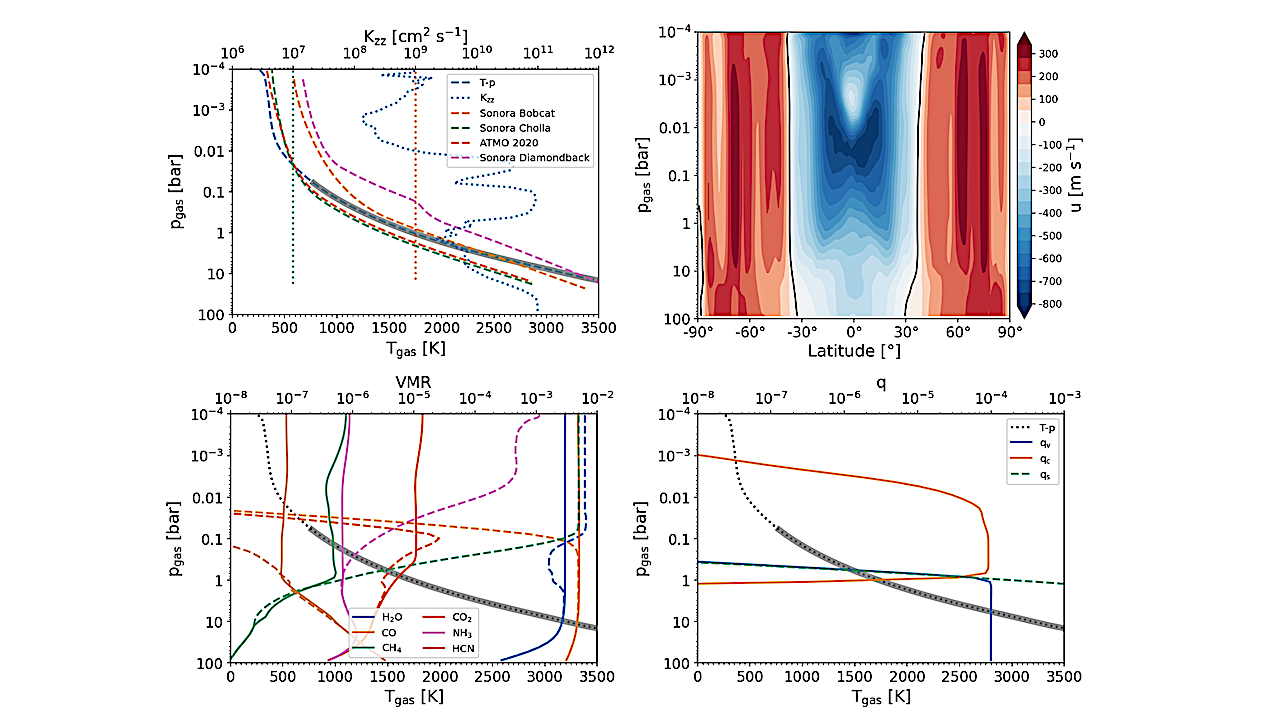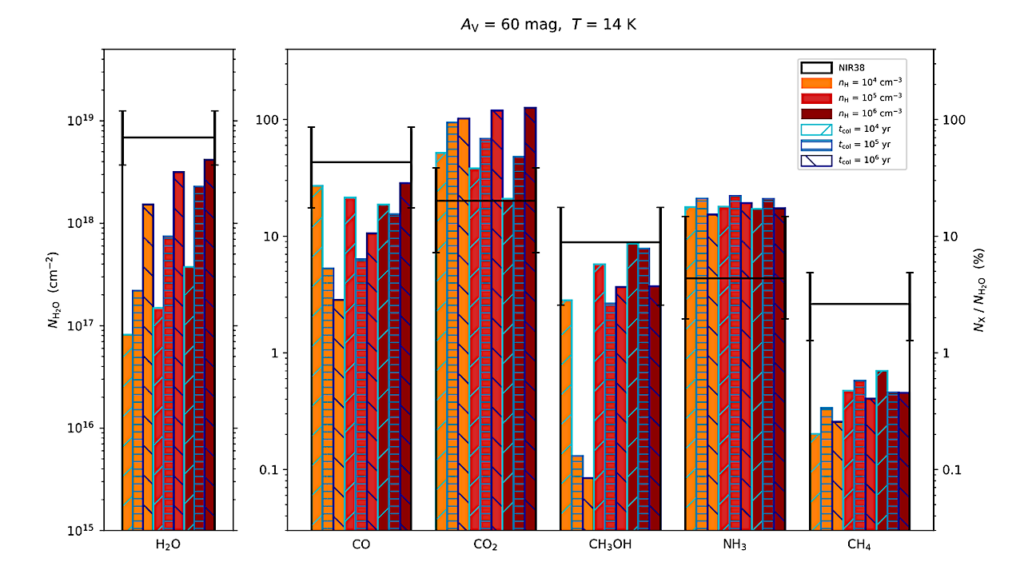Dynamically Coupled Kinetic Chemistry In Brown Dwarf Atmospheres — II. Cloud And Chemistry Connections In Directly Imaged Sub-Jupiter Exoplanets

With JWST slated to gain high fidelity time dependent data on brown dwarf atmospheres, it is highly anticipated to do the same for directly imaged, sub-Jupiter exoplanets.
With this new capability, the need for a full 3D understanding to explain spectral features and their time dependence is becoming an vital aspect for consideration. To examine the atmospheric properties of directly imaged sub-Jupiter exoplanets, we use the three dimensional Exo-FMS general circulation model (GCM) to simulate a metal enhanced generic young sub-Jupiter object.
We couple Exo-FMS to a kinetic chemistry scheme, a tracer based cloud formation scheme and a spectral radiative-transfer model to take into account the chemical and cloud feedback on the atmospheric thermochemical and dynamical properties. Our results show a highly complex feedback between clouds and chemistry onto the 3D temperature structure of the atmosphere, bringing about latitudinal differences and inducing time-dependent stormy features at photospheric pressures.
This suggests a strong connection and feedback between the spatial cloud coverage and chemical composition of the atmosphere, with the temperature changes and dynamical motions induced by cloud opacity feedback driving chemical species behaviour. In addition, we also produce latitude dependent and time dependent spectra of our model to investigate atmospheric variability and periodicity in commonly used photometric bands. Overall, our efforts put the included physics in 3D simulations of exoplanets on par with contemporary 1D radiative-convective equilibrium modelling.
Elspeth K.H. Lee, Xianyu Tan, Shang-Min Tsai
Comments: Submitted to MNRAS (28 Nov. 2023), 15 pages
Subjects: Earth and Planetary Astrophysics (astro-ph.EP); Solar and Stellar Astrophysics (astro-ph.SR)
Cite as: arXiv:2311.16722 [astro-ph.EP] (or arXiv:2311.16722v1 [astro-ph.EP] for this version)
Submission history
From: Elspeth Lee Dr
[v1] Tue, 28 Nov 2023 12:07:33 UTC (3,498 KB)
https://arxiv.org/abs/2311.16722
Astrobiology








